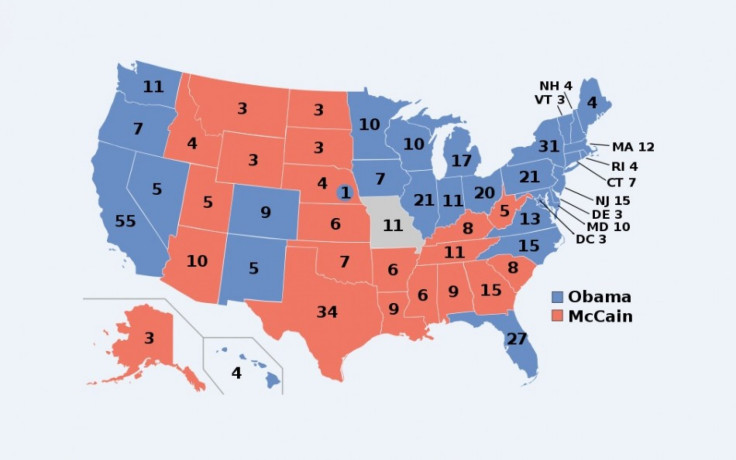State By State Breakdown Of Presidential Campaign Spending Reveals Surprises

The amount of money coursing through this presidential election has already generated plenty of attention, as newly empowered Super PACs join the Romney and Obama campaigns in pouring hundreds of millions of dollars into the effort.
A state by state breakdown reveals the scale of that cash surge with less than two months to go, and also gives a good sense of which states have become priorities as both campaigns map their respective routes to 270 electoral votes. The ad-tracking firm SMG Delta provided NBC with an analysis -- here are some of the main points.
First, the list. This includes spending by the campaigns themselves and by allied organizations, like the conservative American Crossroads and the liberal Priorities USA Action, that also spend money on advertising:
1. Florida - $117.4 million
2. Ohio - $112.1 million
3. Virginia - $85.7 million
4. North Carolina - $56.5 million
5. Colorado - $54.2 million
6. Iowa - $46.6 million
7. Nevada - $38.2 million
8. New Hampshire - $25.3 million
9. Pennsylvania - $19.3 million
10. Wisconsin - $8.1 million
11. Michigan - $8 million
12. Minnesota - $3.2 million
13. New Mexico - $49,000
A few things jump out here. That Florida and Ohio head the list is no surprise -- both are perpetual battlegrounds, populous states whose hefty chunks of electoral votes can swing to either party in a given election.
But the fact that Virginia, North Carolina and Colorado round out the top five reveals how the electoral map is shifting. President Obama won all three states in 2008, transferring places that have typically broken Republican into the blue column (the choice of North Carolina for the Democratic National Convention highlights some of the underlying trends).
Obama advisers have spoken about a Western path, a strategy that allows Obama to capitalize on shifting demographics (a surge in the number of Latino voters, for example), to try and upend the conventional map. Note that Colorado and Nevada are both in the top seven.
It's also telling that Pennsylvania falls all the way to number eight on the list. Pennsylvania typically joins Ohio and Florida as part of the sacred trinity of swing states, but the Romney campaign reportedly believes that Obama is too far ahead there to make a significant push worthwhile. The advertising data underscores this point: while indepedent groups and the Republican National Committee have spent money there, the Romney campaign has not.
The Romney galaxy has heavily outspent Obama in Michigan and Wisconsin. The Obama campaign is banking on the revival of the auto industry ensuring a victory in Michigan, but the state's July unemployment rate of 9 percent, almost one full percentage point higher than the national average, presents an opening for Romney. In Wisconsin, Republican Governor Scott Walker's success in fending off a recall effort -- in addition to Romney's selection of native son Paul Ryan as a running mate -- suggest the state is not a lock to stay blue.
© Copyright IBTimes 2024. All rights reserved.





















